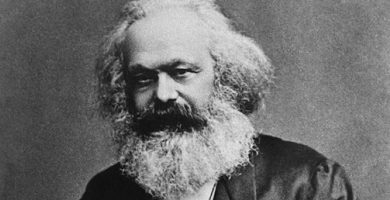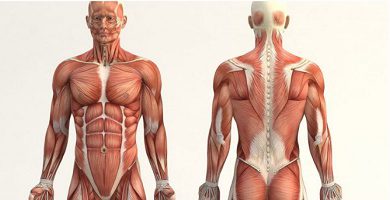What is a molecule?
We explain what a molecule is and some examples of this set of atoms. In addition, the types that exist and their difference with the atom.
-
What is a molecule?
A molecule is understood as an organized and interrelated set of atoms of diverse nature , whether of the same chemical element or of many different elements, by chemical bonds that result in a stable and usually electrically neutral set.
A molecule is also the smallest segment into which a chemical can be divided without denaturing it, that is, without losing its specific physical and chemical properties.
On the structure of a molecule and the degree of compression that exists between its constituent atoms, it will depend whether the substance is in fact a solid (little separation between molecules), a liquid (medium, flexible separation) or a gas (much separation between molecules ).
These types of atomic structures are extremely common in organic chemistry and in the constitution of atmospheric gases. However, not everything is composed of molecules: most metals and minerals in the earth’s crust join with each other or form ions , that is, electrically charged atomic junctions.
The study of molecules and their nomenclature not only includes the amount of atoms that compose them and the properties they present, but also their understanding from a three-dimensional model of unions and structures. Two different molecules can have the same number of atoms of the same type , but being articulated differently, they constitute an entirely different substance.
-
Examples of molecules

Some examples of common molecules are:
- Oxygen: O2
- Hydrochloric acid: HCl
- Carbon Monoxide: CO
- Sulfuric Acid: H2SO4
- Sodium Chloride: NaCl
- Ethanol: C2H5OH
- Phosphoric Acid: H3PO4
- Glucose: C6H12O6
- Chloroform: CHCl3
- Sucrose: C12H22O11
- Paraaminobenzoic acid: C7H7NO2
- Acetone: C3H6O
- Cellulose: C6H10O5
- Trinitrotoluene: C7H5N3O6
- Silver Nitrate: AgNO3
- Urea: CO (NH2) 2
- Ammonia: NH3
-
Types of molecules

The molecules can be classified according to the complexity of their constitution, in this way:
- Iscrete molecules . They have a defined number of atoms, be they of different elements or of the same nature. They can be classified in turn according to the number of different atoms that make up their structure: monoatomic molecules (the same type of atom), diatomic molecules (two atomic types), tricotomic molecules (three atomic types), tetralogic molecules (four atomic types) , etc.
- Macromolecules or polymers . This is the name of the large molecular chains, composed of simpler pieces and joined together, to achieve extensive sequences, which acquire new and specific properties. The plastics , for example, are a composite material from organic macromolecules.
They can also be classified according to their tendency towards electromagnetic stability or instability, as follows:
- Polar molecules . Those endowed with a certain electric charge, which manifests itself as there is an inequality in the attraction of electrons by the nuclei of the atoms involved. Thus, the electrons will tend to orbit more to the strongest nuclei and less to the weaker ones, causing the molecule to be electrically charged as a battery (dipole), with a positive and a negative pole.
- Apolar molecules . Those whose atoms have identical electronegativity, that is, do not show inequality with respect to the attraction of electrons, and retain a neutral charge in an ordinary situation.
-
Differences between atom and molecule

The molecules are made up of atoms and bonds between them, and therefore, they are much smaller and simpler particles than the molecules. In fact, most of the molecules can undergo procedures of rupture or lysis of their chemical bonds, reducing them either to simpler molecules, or to pure chemical elements, that is, atoms.
-
Water molecule

The water molecule is a very common case, composed of three atoms of two types: two hydrogens and one oxygen, covalently bound according to the formula H2O. This molecule, extremely abundant on our planet, is also part of numerous organic substances and the bodies of animals and plants.
This molecule is characterized by having some electrical asymmetry , given that oxygen attracts the electrons of the entire molecule with greater force, which translates into hydrogens having a slight positive charge, and oxygen having a slight negative charge.
To this particular property is due to the adhesion of water, and the possibility that its molecules join together to form a liquid or also with other substances that can be dissolved in water.




